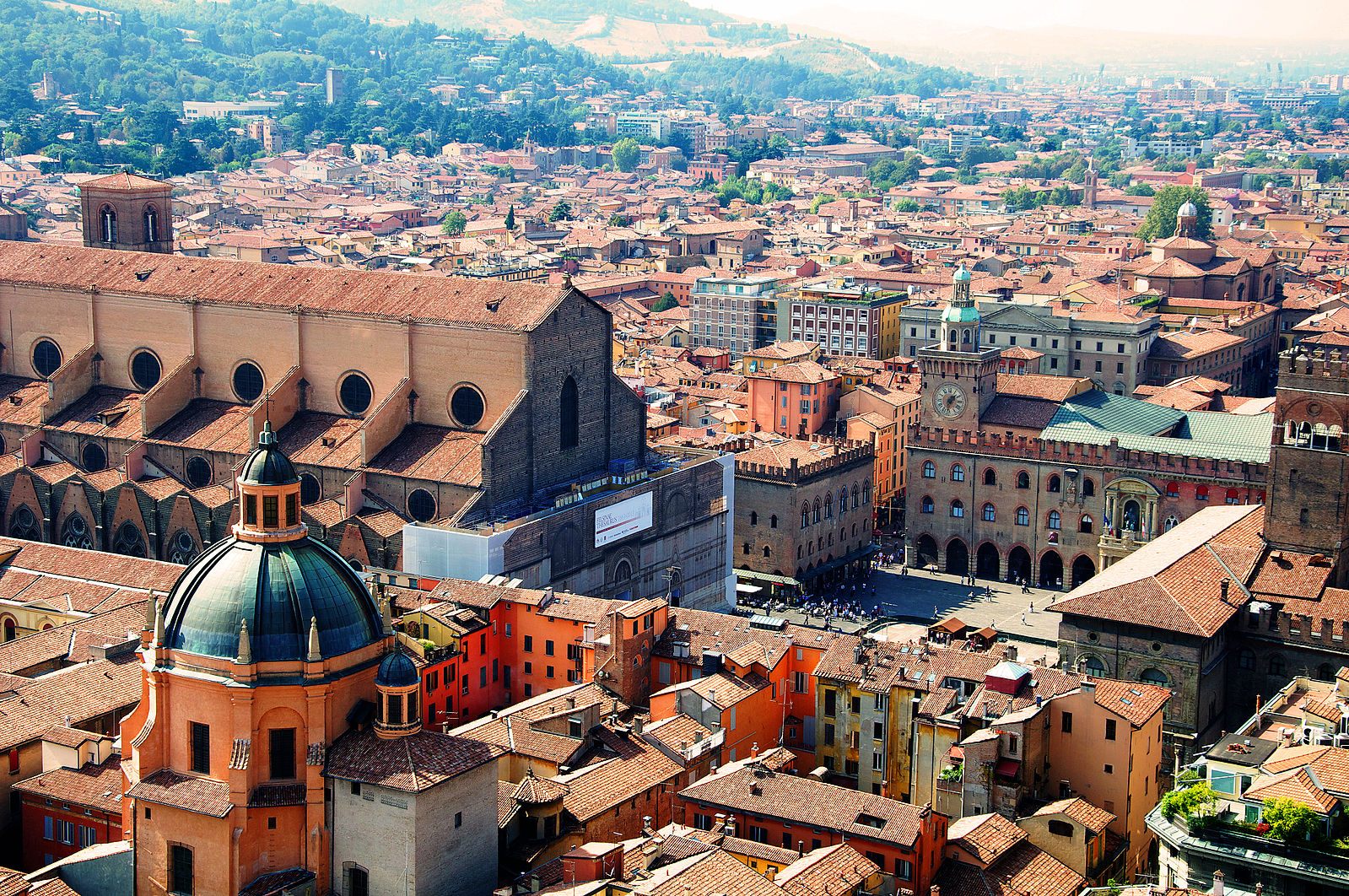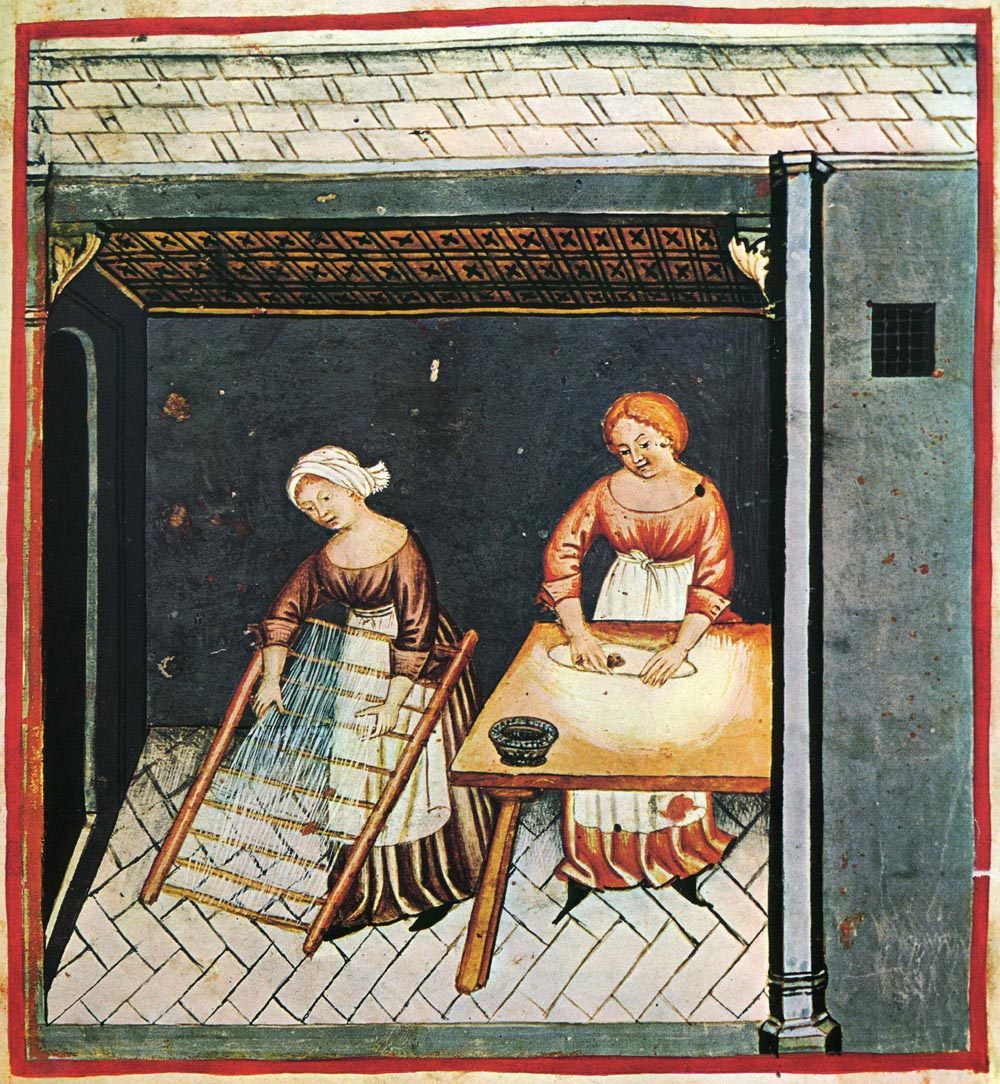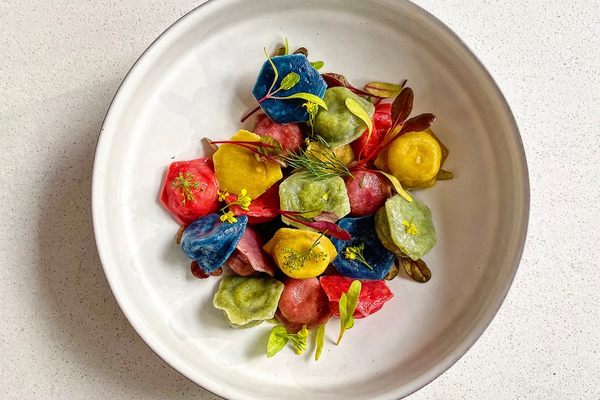Why Are People Seeing Red Over Spaghetti Bolognese?
A long war over the dish’s authenticity may be reaching its peak.

All across the western world, from the tip of Italy’s boot to the coast of California, a conflict simmers. Some say the solution is worldliness—that we must expand the definitions of old standbys to reflect shifting realities. Others would boil themselves alive before letting the old traditions change. The focus of this discord inspires grand pronouncements. It tears families apart. Most grievously of all, it hijacks the dinner conversation.
I’m referring, of course, to spaghetti bolognese.
If you’ve ever eaten Italian food outside of Italy, chances are you’ve dug into a great big bowl of the ‘bol—a savory glop of meat and tomato, served over a tangle of long, round noodles. It’s on the menu everywhere from fancy restaurants to school cafeterias—in the U.K., “you’ll rarely find a meat and tomato ragu served with any other shape of pasta,” says food writer Felicity Cloake.
You may have even cooked it yourself: the internet offers recipes from such luminaries as Emeril Lagasse, Jamie Oliver, and Campbell’s. While they may disagree on the particulars—Jamie flavors his with streaky bacon, while Emeril prefers pancetta—they’re happy to share their takes on what they clearly consider a classic dish.

Spaghetti bolognese translates, roughly, to “spaghetti from Bologna.” But if you try to take this particular flavor train back where it supposedly comes from, forget it—you’ll be turned straight around. The British broadcaster and politician Michael Portillo found this out the hard way when he took a camera crew to the city seeking the dish. “Oh my gosh, no,” says the first young woman he encounters in the footage. She makes an X with her arms, as though warding off a great evil. “Assolutamente no. No no no no.”
And if you try to serve it up to an Italian, expect something close to a flipped table. “Bolognese is the most abused Italian dish,” the chef Massimo Bottura, who has three Michelin stars for his restaurant, Osteria Francescana, told Corriere della Sera in 2010. Earlier this year, another chef, Antonio Carluccio, doubled down: “When I first tasted it [in Britain], in a little Italian restaurant, I was so horrified I sent it straight back to the kitchen,” he told the Daily Mail. “It was inedible.”
Like most good controversies, the spaghetti bolognese spat consists of a series of nested disagreements. The most basic concerns whether or not bolognese can be eaten with spaghetti at all. “They don’t even eat spaghetti in Bologna,” explains culinary historian Linda Pelaccio. “They eat a wider noodle.” The number one choice, she says, is tagliatelle—a long, flat ribbon of pasta, about a centimeter wide, and cooked fresh instead of dried.

This pairing is historical, as Bologna is known for its fresh egg pasta—dried spaghetti, which is made of wheat, is generally from Naples, much further south. But it’s also practical. “A bolognese is really just a bunch of crumbled meat,” says Pelaccio. “And if you think about it, the noodle is really just the method of transport into your mouth.” If tagliatelle is like Scotch tape, with plenty of sauce-sticking surface, spaghetti is more like a string: “You’re going to have a hard time getting that in with a few strands,” she says.
Other issues have to do with the sauce’s ingredients, which, to outsiders, can be somewhat counterintuitive. “When you think Italy, you start to put oregano, basil, parsley, garlic, which is not at all [correct],” Carluccio told a British audience earlier this year. The classic preparation lacks all these things—it’s just meat, stock veggies, wine, and tomatoes. (His remarks spurred a number of inflammatory headlines: “Antonio Carluccio BLASTS Brits for adding herbs to spaghetti bolognese,” read the Express.)
It’s unclear exactly who first bastardized the bolognese. Some postulate that during World War II, American and British soldiers passing through Bologna ate tagliatelle with meat sauce, liked it a lot, and began requesting it when they came back home, spurring Italian restauranteurs to do their best imitation. Even before the 1940s though, Northern Italians poured into Britain, escaping the wreckage of the Napoleonic wars and taking their recipes with them, perhaps occasionally making do with dried spaghetti.

Meanwhile, in America, the opposite amalgamation occurred: most immigrants came from the impoverished Italian south, and were so excited to find meat readily available that they began adding it to everything (begetting that other Italo-American classic, spaghetti and meatballs). This spirit of invention eventually permeated other dishes.
“The Italians came over, and they made do with what they found,” says Pelaccio. “Now, Italo-American is a cuisine unto itself—a viable cuisine.” By the 1950s, respected Italian cookbook authors were penning recipes for bolognese with “any kind of noodle.” “I think it’s basically, ‘give ‘em what they want,’” she says.
You don’t hear about a lot of meatball backlash. But many Italians clearly see the spaghettification of bolognese, specifically, as a dire wrong. Their attempts to right it have ranged from organized, high-level efforts to, more recently, a kind of Internet comment trench warfare. In 1982, Bologna’s chamber of commerce officially notarized what they consider to be the authentic recipe, which contains beef skirt, pancetta, celery, carrot, onion, a little tomato, wine, and milk.
Beloved @Ryanair stumbled on disappointing #fail#spaghettibolognese🍝
— Michael F. Forni (@MichaelForni) July 8, 2016
DO NOT EXIST!😱 #TagliatelleAlRagu is THE dish pic.twitter.com/oWpCmI0dgw
In 2010, the Virtual Association of Italian Chefs, an international trade group, organized a kind of Bolognese Appreciation Day, during which hundreds of chefs around the world made traditional versions of the dish. This past August, when the New York Times published a recipe for “Rigatoni with White Bolognese,” purists came out of the woodwork.
“Call this recipe what you want not Bolognese,” commented one dissatisfied customer. “The ragu you describe is terrible, so please stop inventing recipes,” wrote another. “Our suggestion is that you organize a trip to Bologna so you can understand.” When Ryanair tweeted out a food-themed flight suggestion, the airline suffered a similar takedown.
Such stringent responses seem a little over the top. But as globalization changes the landscapes and foodscapes of the planet, people look for a place to plant a flag. “It’s never really about the ragu, it’s about defending a way of life,” says Cloakes. “I suspect, like almost everywhere around the world, the Bolognese are feeling somewhat sensitive about their local traditions being stolen and bastardized by foreigners.”
But as new versions of the food become a staple for other communities, those converts begin feeling equally defensive. In Britain, for instance, the dish is so common they’ve given it a nickname: spag bol. “It’s one of the first things everyone learns how to make,” says Cloake. “Over the years we’ve developed our own recipe for it, and to hear that criticized as wrong, even by the people that apparently invented it, feels like a very personal attack.”
The latest attempt to smooth things over comes from Piero Valdiserra, a marketing executive and lifelong Bologna resident. After absorbing decades of sauce-based resentment, Valdiserra recently took matters into his own hands. His new book, Spaghetti alla Bolognese: L’altra Faccia del Tipico (Spaghetti Bolognese: The Other Side of Tradition) tries to have it both ways—it argues that Bolognans have been too cruel to what very well could be a product of their city. Poorer residents have long cooked their bolognese sauce various ways and eaten it over spaghetti, he says. Fresh egg pasta has generally been the purview of the rich, and served in restaurants.
So far, the response has been mixed. “Traditionalists are skeptical or critical, if not openly hostile,” Validserra told The Local. But he is optimistic: “Culinary tradition is simply the accumulation of many small innovations, which are never finished,” he says. “Those who seek to ‘stop’ the evolution of food by fixing it in rigid recipes fail to understand the deeper spirit of food itself.”
Plus, they could be missing out on something really tasty.
Gastro Obscura covers the world’s most wondrous food and drink.
Sign up for our regular newsletter.




























Follow us on Twitter to get the latest on the world's hidden wonders.
Like us on Facebook to get the latest on the world's hidden wonders.
Follow us on Twitter Like us on Facebook